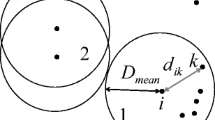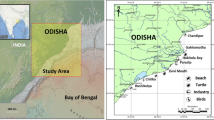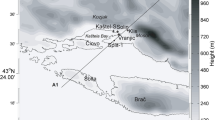Abstract
Arrival of tar balls to the Goa coast during pre- and southwest monsoon seasons has been a regular phenomenon in the past few years. In one such event, we observed tar ball deposits along the Goa coast during August 2010, April 2011 and May 2011 when no oil spill was reported in the Arabian Sea (AS). The only source for the formation of tar balls could be the spill/tanker-wash from the tankers passing through the international tanker routes across the AS. Assuming this, an attempt has been made to simulate surface winds, currents and tar ball trajectories for August 2010 using hydrodynamics and particle tracking models. Tar ball particles were released numerically at eight locations in the AS, and five of them reached the Goa coast, matching reasonably well with the observations. The present study confirms our view that the source of these tar balls is the accidental spills or tanker-wash along the international oil tanker route in the AS. A review of the global scenario of tar ball study is also presented in the Introduction.






Similar content being viewed by others
References
Al-Madfa, H., Abdel-Moati, M. A. R., & Al-Naama, A. (1999). Beach tar contamination on the Qatari Coastline of the Gulf. Environmental International, 25(4), 505–513.
Anonymous (1984). IOC manual for monitoring oil and dissolved/dispersed petroleum hydrocarbons in marine waters and on beaches. Manuals and Guides, No. 13.
Anonymous (2010). Times of India newspaper 31 August 2010 Goa edition.
Butler, J. N. (1975). Evaporating weathering of petroleum residues, the age of pelagic tar. Marine Chemistry, 3, 9–21.
Butler, J. N. (1998). Beach tar on Bermuda: recent observations and implications or global monitoring. Marine Pollution Bulletin, 36(6), 458–463.
Chandru, K., Zakaria, M. P., Anita, S., Shahbazi, A., Sakari, M., Bahry, P. S., & Mohamed, C. A. R. (2008). Characterization of alkanes, hopanes, and polycyclic aromatic hydrocarbons (PAHs) in tar-balls collected from the East Coast of Peninsular Malaysia. Marine Pollution Bulletin., 56, 950–962.
Corbin, C. J., Singh, J. G., & Ibiebele, D. D. (1993). Tar ball survey of six eastern Caribbean countries. Marine Pollution Bulletin, 26(9), 482–486.
Cutler, A. N. & J. C. Swallow (1984). Surface currents of the Indian Ocean (To 25°S, 100°E). IOS Technical Report, Institute of Oceanographic Sciences, UK, 187 pp.
Dhargalkar, V. K., Kureishy, T. W., & Bhandare, M. V. (1977). Deposition of tar balls (Oil residue) on beaches along the west coast of India. Mahasagar: Bulletin of the National Institute of Oceanography, 10(3 & 4), 103–108.
Dwivedi, S. N & A. H. Parulekar (1974). Oil pollution along the Indian coastline. NBS special publication. 409, Marine Pollution Monitoring (petroleum), Proceedings of a symposium and workshop held at NBS, Galthersburg, Maryland, May 13–17.
Eagle, G. A., Green, A., & Williams, J. (1979). Tar ball concentrations in the ocean around the Cape of Good Hope before and after a major oil spill. Marine Pollution Bulletin, 10(11), 321–325.
Gabche, C. E., Folack, J., & Yongbi, G. C. (1998). Tar ball levels on some beaches in Cameroon. Marine Pollution Bulletin., 36(7), 535–539.
Georges, C., & Oostdam, B. L. (1983). The characteristics and dynamics of tar Pollution on the Beaches of Trinidad and Tobago. Marine Pollution Bulletin, 14(5), 170–178.
Gilliam, R. C., & Pleim, J. E. (2010). Performance assessment of new land surface and planetary boundary layer physics in the WRF-ARW. Journal of Applied Meteorology and Climatology, 49, 760–774.
Golik, A. (1982). The distribution and behavior of tar balls along the Israeli coast. Estuarine, Coastal and Shelf Science, 15(3), 267–274.
Hastenrath, S., & Greischar, L. (1991). The monsoonal current regimes of the tropical Indian Ocean Observed surface flow fields and their geostropic and wind-driven components. Journal of Geophysical Research., 96, 12619–12633.
Heaton, M. G, Wilke R. J., Bowman M. J. (1980). Formation of tar balls in a simulated oceanic front. The Texas Journal of Science XXXII, No.3, September, 1980.
Holdway, P. (1986). A circumnavigation survey of marine tar. Marine Pollution Bulletin, 17(8), 374–377.
Kadam, A. N. (1988). Some studies on tar pellets at Veraval Coast (Gujarat). Mahasagar, Bulletin of National Institute of Oceanography, 21, 173–175.
Kadam, A. N., & Rokade, M. A. (1996). Source identification of tar residue from Mumbai beach. Indian Journal of Marine Science, 25, 379–380.
Kaladharan, P., Prema, D., Nandakumar, A., & Valsala, K. K. (2004). Occurrence of tar ball and waste material on the beaches along Kerala coast in India. Journal of the Marine Biological Association of India, 46(1), 93–97.
Kornilios, S., Drakopoulos, P. G., & Dounas, C. (1998). Pelagic tar, dissolved/dispersed petroleum hydrocarbons, and plastic distribution in the Cretan Sea, Greece. Marine Pollution Bulletin, 36(12), 989–993.
Lin, Y., & Colle, B. A. (2011). A new bulk microphysical scheme that includes riming intensity and temperature-dependent ice characteristics. Monthly Weather Review, 139, 1013–1035.
Nair, A., Devassy, V. P., Dwivedi, S. N., & Selvakumar, R. A. (1972). Tar ball pollution in Central west coast of India. Current Science, 41, 766–767.
Nemirovskaya, A. (2011). Tar balls in Baltic Sea Beaches. Water Resources, 38(3), 315–323.
Nesterova, M. P., Mochalova, O. S., & Mamayev, A. B. (1983). Transformation of oil-in-water emulsion into solid Tar balls in the Sea. Oceanology, 23(6), 454–461.
Okera, W. (1974). Tar pollution of Sierra Leone beaches. Nature, 252, 682.
Oostdam, B. L. (1984). Tar pollution of beaches in the Indian Ocean, the South China Sea and the South Pacific Ocean. Marine Pollution Bulletin, 15, 267–270.
Pleim, J. E. (2007). A combined local and non-local closure model for the atmospheric boundary layer: Part 1. Model description and testing. Journal of Applied Meteorology and Climatology, 46, 1383–1395.
Price, A. R. G., & Nelson-Smith, A. (1986). Observations on surface pollution in the Indian Ocean and South China Sea during the Sindbad Voyage (1980–1981). Marine Pollution Bulletin, 17(2), 60–62.
Qasim, S. Z. (1975). Oil pollution of the seas around India. Journal of the Institution of Marine Technologists, 19(2), 15–19.
Reddy, C. V. G., & Singbal, S. Y. S. (1973). Chemical characteristics of tar like material found on the beaches along the east and west coast of India in relation to their source of horizon. Current Science, 42(20), 709–711.
Sengupta, R., & Kureishy, T. W. (1981). Present state of oil pollution in the northern Indian Ocean. Marine Pollution Bulletin, 12(9), 295–301.
Sengupta, R., & Qasim, S. Z. (1982). Oil pollution studies in northern Indian Ocean. Petroleum Asia Journal. Vol, 5, 34–37.
Sengupta, R., Fondekar, S. P., & Alagarsamy, R. (1993). State of oil pollution in the northern Arabian Sea after the 1991 Gulf oil spill. Marine Pollution Bulletin, 27, 85–91.
Shankar, D., Vinayachandran, P. N., & Unnikrishnan, A. S. (2002). The monsoon currents in the north Indian Ocean. Progress in Oceanography, 52, 63–120.
Shannon, L. V., Chapman, P., Eagle, G. A., & McClurg, T. P. (1983). A comparative study of tar ball distribution and movement in two boundary current regimes: implications for oiling of beaches. Oil and Petrochemical Pollution, 1(4), 243–259.
Shaw, D. G., & Mapes, G. A. (1979). Surface circulation and the distribution of pelagic tar and plastic. Marine Pollution Bulletin, 10(6), 160–162.
Sindhu, B., Suresh, I., Unnikrishnan, A. S., Bhatkar, N. V., Neetu, S., & Michael, G. S. (2007). Improved bathymetric datasets for the shallow water regions in the Indian Ocean. Journal of Earth System Science, 166(3), 261–274.
Skamarock, W. C., Klemp, J. B., Dudhia, J., Gill, D. O. ,Barker D. M.; Duda M. G., Huang, W., Wang, X-Y, Powers, J. G. (2008). A description of the advanced research WRF Version 3. Tech. Note 475 + STR. National Center for Atmospheric Research: Boulder, USA.
Sontro, T. S. D., Leifer, I., Luyendyk, B. P., & Broitman, B. R. (2007). Beach tar accumulation, transportation mechanisms, and sources of variability at coal oil point, California. Marine Pollution Bulletin, 54(9), 1461–1471.
Suneel, V., Vethamony, P., Zakaria, M. P., Naik, B. G., & Prasad, K. V. S. R. (2013). Identification of sources of tar balls deposited along the Goa coast, India, using fingerprinting techniques. Mar. Pollut. Bull. doi:10.1016/j.marpolbul.2013.02.015.
Tsouk, E., Amir, S., & Goldsmith, V. (1985). Natural self-cleaning of oil-polluted beaches by waves. Marine Pollution Bulletin, 16(1), 11–19.
Wong, C. S., Green, D. R., & Cretney, W. J. (1973). Quantitative tar and plastic waste distribution in the Pacific Ocean. Nature, 247, 30–32.
Wong, C. S., Green, D. R., & Creetney, W. J. (1976). Distribution and source of tar on the Pacific Ocean. Marine Pollution Bulletin, 7(6), 102–106.
Zakaria, M. P., Okuda, T., & Takada, H. (2001). Polycyclic Aromatic Hydrocarbon (PAH) and hopane in stranded Tar balls on the coast of peninsular Malaysia: applications of biomarkers for identifying sources of oil pollution. Marine Pollution Bulletin, 42(12), 1357–1366.
Acknowledgment
We thank the director of the National Institute of Oceanography, Goa, for providing the facilities that allowed us to carry out this work. We are grateful to the CSIR for providing Senior Research Fellowship to Mr. V. Suneel. Thanks are due to Mr. K. Sudheesh for his valuable suggestions regarding the model. We also thank Mr. J. Laxmikant for his help during the course of fieldwork. This is NIO contribution no. 5356.
Author information
Authors and Affiliations
Corresponding author
Rights and permissions
About this article
Cite this article
Suneel, V., Vethamony, P., Kumar, K.V. et al. Simulation of Trajectories of Tar Ball Transport to the Goa Coast. Water Air Soil Pollut 224, 1538 (2013). https://doi.org/10.1007/s11270-013-1538-9
Received:
Accepted:
Published:
DOI: https://doi.org/10.1007/s11270-013-1538-9




